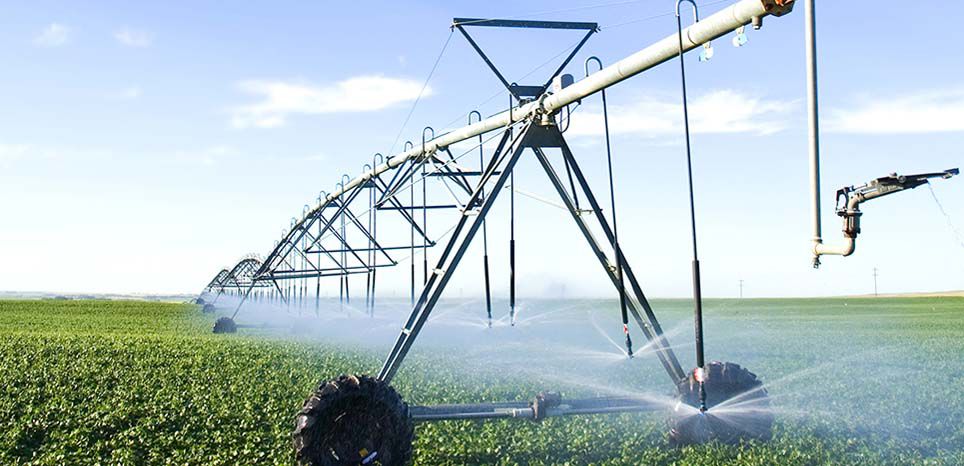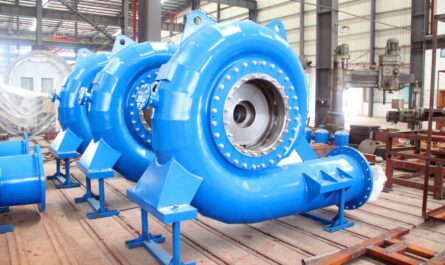The backbone of agriculture is irrigation. Wetting the lands and providing water to the crops has allowed cultivation and harvesting across many parts of the world. While traditional irrigation techniques, such as using canals and diverting rivers, served us well for centuries, modernization is needed to sustain rising demands. Advance irrigation machinery provides solutions to use water resources efficiently.
Role of Irrigation in Agriculture
Agriculture plays a vital role in our economy and in feeding the world’s growing population which is estimated to reach almost 10 billion by 2050. Irrigated agriculture currently produces about 40% of global food on 20% of cultivated land. By using half of world’s fresh water resources, irrigation enhances crop yields and allows multiple cropping cycles. This rise in productivity is key to meet future demands for food, feed, fiber and biofuel. However, lack of reliable irrigation can negatively impact crop yields. Advance machinery helps make best use of available water.
Sprinkler and Drip Irrigation Systems
One of the most useful advancements is sprinkler and drip irrigation systems that deliver water directly to root zones through a network of valves, pipes, tubing and nozzles. These localized irrigation methods apply smaller amounts of water more uniformly compared to surface irrigation techniques like flooding. This reduces water consumption by 20-50% while improving yields through proper moisture and fertilizer management. Portable pivot and lateral move sprinkler systems automate water distribution over fields according to programmed settings and soil moisture levels. Precision drip irrigation helps utilize micro-irrigation practices for high-value crops.
Sub-headings:
Benefits of sprinklers and drip systems
Sprinkler and drip systems provide multiple benefits. They help conserve water by reducing losses from deep percolation, runoff and evaporation. Since smaller amounts of water are applied closer to plant roots, these systems can utilize marginal quality water by leaching out salts. Water use efficiency is improved as only the root zone receives moisture. Fertilizers too can be applied through these systems, delivering nutrients exactly where plants can absorb them. Weed growth is contained due to localized wetting pattern. Labors costs are lesser as these systems automate irrigation management.
– Adoption challenges
While localized Irrigation Machinery systems offer higher yields, their installation requires substantial initial investment and technical knowledge regarding design, components selection and maintenance. Farmers also need to adapt water management practices as per crops’ irrigation requirements. These challenges have slowed widespread adoption, especially in developing nations where majority of smallholder farmers operate on low budgets. However, successful demonstration projects and availing credit or subsidy support can popularize these systems.
Pumping Machinery
Another critical component is pumping machinery to lift and pressurize water from its source and deliver to fields. Common pumping systems used in agriculture include shallow well centrifugal pumps for lifting from tube wells or open wells up to 15-20 meters depth. For deeper tubewells, submersible pumps placed within the casing are suitable. For surface water sources like canals, rivers and ponds, vertical turbine or axial flow pumps are appropriate. Diesel or electric motor driven pumps are installed depending upon power availability. Solar powered pumps provide sustainable solution for remote areas. Automating pumps through fertigation controllers helps achieve prescribed irrigation schedules.
Sub-headings:
– Choosing right pump type
Selecting an appropriately sized pump that matches source characteristics is important. Parameters like discharge rate, total dynamic head, pump efficiency curve, construction material, casing size etc. need consideration. Agencies provide guidelines for common scenarios.
– Maintenance and repair
Regular maintenance like cleaning filters and strainers, greasing bearings, checking RPM ensures long pump life. Repair workshops trained in agriculture pump repair help address breakdown issues promptly to avoid production losses. Spare part availability through local dealers is another concern.
Role of Technology
Advance technologies are supporting more intelligent use of irrigation resources. Sensor networks, connected via Internet of Things (IoT), monitor field conditions like soil moisture, rainfall, water table etc. and automatically control systems. Smart sprinklers incorporate sensors to adjust flow or move based on real-time data. Drones and satellites provide high resolution images for precision irrigation scheduling. Decision support tools powered by big data help optimize practices. Blockchain strengthens water rights and traceability. While capital costs are high, these technologies promote efficient and sustainable irrigation over long-term.
Research and Development
Continuous research and development work is expanding solutions palette. Scientists at agricultural universities and private firms are engineering new sprinkler drippers and pivots designs adapting to varied topographies. Low cost drip systems using local materials promote micro-irrigation. Solar powered irrigation pumps integrated with batteries enable off-grid irrigation. Alternative sources of water like treated sewage and brackish aquifers are being tapped after desalination. Water saving genes in important crops are being developed through biotechnology. Public-private partnerships support translating innovations to fields.
While traditional irrigation systems served well, transition to advanced pressurized irrigation systems, efficient water lifting devices and integrating technologies promote sustainable productivity gains and food security essential for future. Overcoming adoption barriers through demonstration, credit support and skill building can accelerate this transition. Concerted efforts between farmers, industry, research and policy makers can help modernize irrigation infrastructure creating a win-win for all stakeholders.
*Note:
1. Source: Coherent Market Insights, Public sources, Desk research
2. We have leveraged AI tools to mine information and compile it.



